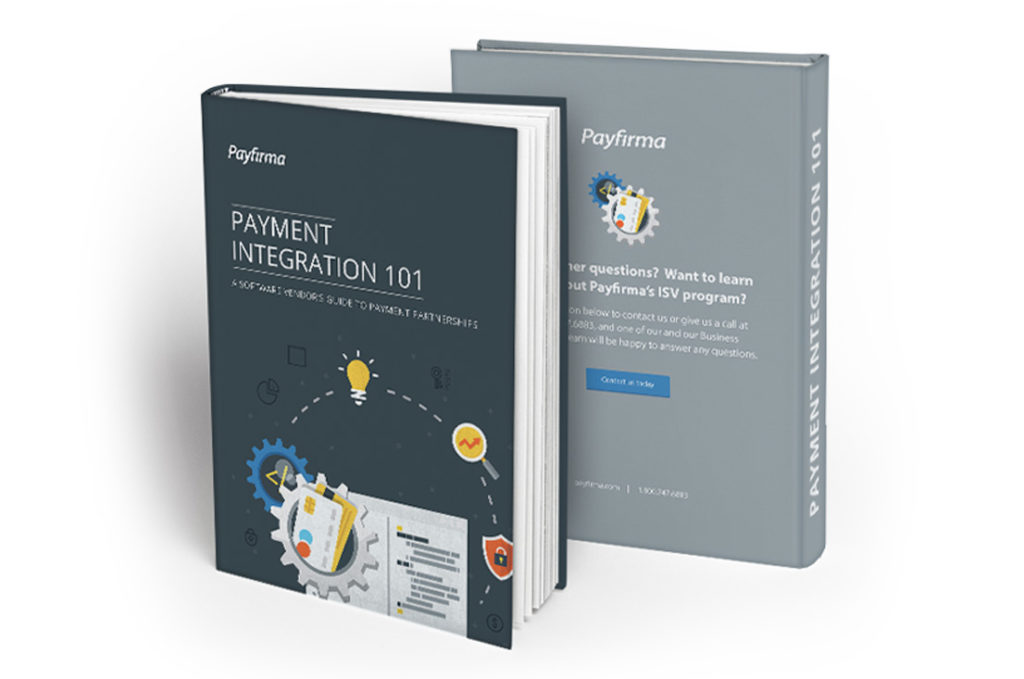An integrated payment solution saves a software vendor’s customers the need to research and select a separate provider for their payment services and allows them to offer a seamless customer experience.
When it comes to building payments into your software, you and your developer(s) have two options:
- Build the payment functionality internally from scratch.
- Integrate with an existing third-party API.
Over the last few years, many developers have taken advantage of the latter option and utilized third- party APIs. First-generation technology companies had to build specific functionality from scratch if they wanted to incorporate payments into their software, but these days, there’s an API for everything – including payment processing.
API 101
The easiest and often most cost-efficient way to build payments into your software is to partner with a payment processor that offers an API (Application Programming Interface). An API “is a set of routines, protocols, and tools for building software applications” that facilitate communication between applications (service products, software programs, apps, etc.). An immeasurable number of interactions have been made possible by APIs across most industries, including digital payments. Since Salesforce and eBay introduced their APIs back in 2000, there has been a massive boom of APIs. The first uses of APIs included simple functions like search, but its uses have since expanded to other innovative applications including payments. There are currently over 17,000 public APIs on ProgrammableWeb – and that doesn’t include private APIs. The growth of the API economy isn’t due to any one industry; from fintech to social networks, APIs are being used across multiple fields.
APIs simplify your development process
As more websites and applications were created, common features began to surface. As a result, APIs for popular functions surfaced. APIs simplified and sped up the development process by allowing developers to build on top of, or integrate with existing products rather than building an entire system from scratch. APIs appealed to software vendors as they realized they didn’t need to dedicate developer resources to build these standardized functionalities into their software; they could utilize an API and stay focused on their core product. These APIs are also typically more flexible and robust than those built internally. As a result, there has been an increase in reliance on third-party APIs from larger platforms and specialized developers like Payfirma.
Benefits of integrating with a specialized payment processing API:
- Comprehensive security: Any merchant that comes into contact with payment information is subject to PCI compliance, which can be a hassle to maintain. A reliable and trustworthy payment processing API takes care of PCI compliance so your clients don’t have to worry about it. They ensure that every transaction processed is encrypted and payment information is always safely stored.
- Increased productivity: Software vendors that leverage existing, more robust APIs are able to free up more time to focus on developing their core products/services.
- Reduced costs: Third-party APIs save you the cost of hiring a developer to build the functionality and maintain the technology. A third-party API automatically updates to keep up with the latest advancements and regulations.
This is an adapted excerpt from our latest eBook, Payment Integration 101: A Software Vendor’s Guide to Payment Partnerships. To read more, download the free eBook on the right.
